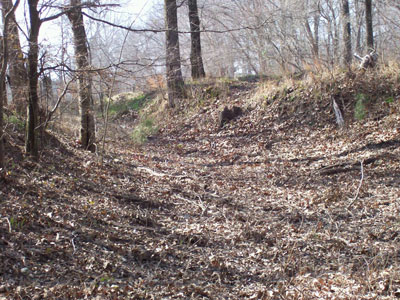
During a July 1952 session of the Panola County Commissioners Court, Tatum mayor Lizzie Holtzclaw requested a new state highway built along the old Trammell’s Trace. Many in the court room were unfamiliar with the Trammell’s Trace the 82-year-old mayor cited or even knew what a trace was.
Holtzclaw believed a paved highway from Tatum to Garrison along the old trace would allow larger trade centers for local farmers. After all Trammels’ Trace was a historic thoroughfare years before the Republic of Texas. Pirate Jean Lafitte extended the trace through East Texas from Galveston to St. Louis.
In the early days of the Republic of Texas any path or trail that served as a transportation link was called a trace. This route extended from Galveston northward through present day counties of Chambers, Liberty, San Jacinto, Polk, Angelina, Nacogdoches, Panola, Harrison, Marion, Cass and Bowie before entering Arkansas Territory near Texarkana.
Created by Nicholas Trammell the trace was often used by Lafitte and his men to move their cache north to St. Louis to sell. Goods heading for eastern parts of Texas were freighted down the Trace. At the time, Lafitte was considered a desperate and dangerous pirate until he fought valiantly along side US troops in the 1815 Battle of New Orleans ending the War of 1812.
At some point in time, Lafitte and his men joined Trammell and his followers to guard six wagons full of gold from Galveston to St. Louis. More than 100 men guarded the wagons up Trammell’s Trace to Texarkana to see it did not fall into the hands of Spanish soldiers. The Spanish forces decidedly outnumbered the men under Trammell and Lafitte by twice as many men.
As the wagon train neared the Sabine River crossing near the village of Marshall some of Trammell’s scouts hurriedly overtook the wagon train to report the Spanish were on the march nearby. Trammell and his followers, knowing they were badly outnumbered, decided to drive the wagons into Hendricks Lake near the Sabine, resist the attack as best they could, and then return later for the gold.
The Spanish troops virtually annihilated the defending forces. Survivors later tried to find the gold but the wagons, it seems, had been driven into a bed of quicksand and disappeared.
For more than 180 years, East Texans have searched for the treasure in Hendricks Lake. Once a rusty wagon wheel rim was dug out of the lake. It spurred renewal of the hunt, but to no avail.
To complicate matters, some stories tell of gold in the wagons, while other stories say the wagons carried silver. As of today, no one has found either gold or silver. But Lizzie Holtzclaw got her request. Today paved roads along the old Trammell’s Trace link Tatum and Garrison allowing East Texas farmers to deliver delicious tomatoes and watermelons to market.
